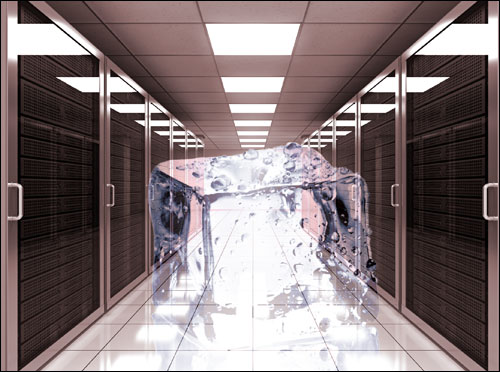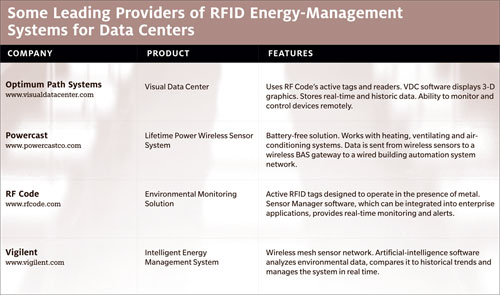Feb 01, 2012Data centers—facilities that typically house servers, routers and storage systems—are energy hogs. The equipment not only is sensitive to heat but also generates large amounts of heat, so cooling is essential. But all too often, data centers are cooled excessively, to ensure the best environment for the equipment contained within them.
That makes data centers among the biggest energy consumers within enterprises. And the use of energy in these facilities continues to climb, despite the fact that many organizations have consolidated servers, thanks to technologies such as virtualization. According to a report released in September 2011 by DatacenterDynamics, a London-based research firm, data centers worldwide were expected to consume 19 percent more energy in the next 12 months than they had in the past year.
The greatest increase in power demand is in markets with the highest projected data center facility growth over the next 12 months, the report says. That means bigger increases in energy use are expected in major U.S. and European markets than anywhere else. A significant number of the organizations queried think increased energy costs will have an impact on their data center operations during the next 12 months.
Many organizations are motivated by a desire to cut costs, and better energy management is one place to focus, says Russell Klein, VP and group director, IT infrastructure, at research firm Aberdeen Group, in Boston. "Whether the servers and storage devices are on-premise or hosted, the organization is paying for the infrastructure, so everyone is concerned about managing the cost of the data center," he says.
Most companies monitor data-center environments with large, wired environmental systems, which tend to be costly, complex, and time-consuming to install and reconfigure. Now, wireless monitoring systems that use radio frequency identification and sensor technologies can gather environmental information in real time, to help companies better manage energy consumption.
Whether your organization already has a wired system to cool its data center or is considering environmental monitoring for the first time, here's what you need to know about RFID energy-management solutions.
Wireless Installation
RFID wireless systems are designed to be easier and less costly to install than wired systems. A typical implementation involves installing sensor-equipped RFID tags or wireless sensors on server racks (three tags per rack, for example), RFID readers to pick up signals from the sensor tags (one reader per 40 racks, for instance), and server-based software to aggregate results, issue reports, track trends and provide other services.
The time necessary to install a system depends on the size of the data center and the number of tags required. It typically takes five minutes to install each tag and 30 minutes for each reader, according to RF Code, which offers the Environmental Monitoring Solution. Based on data modeling of actual customer installations conducted by RF Code, a 250-rack data center—in which a company is installing one reader for every 40 racks and three tags per rack—would take roughly 65 hours to install and cost approximately $6,500.
RF Code estimates that a wired system for the same data center that includes one aggregation appliance (which hosts the sensors and is accessible via a TCP/IP network) for every five racks and three wired sensors per rack would take roughly 212 hours to install at a cost of approximately $21,000. (This is based on it taking 30 minutes to install each appliance and 15 minutes to install each sensor.)
Vigilent's Intelligent Energy Management System is best suited for large data centers (more than 25,000 square feet) that are overcooled, though there are "no scalability limitations with our system at either end," says Dan Mascola, product marketing manager. "Our smallest implementation is a 600-square-foot data center owned by the State of California. The largest is a well-over-650,000-square-foot data center owned by a telecom company."
Click here to view a larger version of this table.
The Visual Data Center, from Optimum Path Systems, can run with a single tag. "We have several deployments where only a handful of very important devices are being managed," says Steve Webel, COO of Optimum Path. But, he adds, the business case for using the system is strongest for deployments of 20 server cabinets or more.
RF Code's solution is "massively scalable" and can support a computing facility as small as a closet with one server rack to a data center with thousands of racks, says Chris Gaskins, VP of product development. It's "cost-effective when you have 20 racks or more, but it's really optimal for large data centers" of 2,000 or so racks, he says. "One of our customers, a large financial transactions company, has over 10,000 sensors in two or three data centers. So scalability doesn't worry us."
In general, applications for just a few tags will not be economical for companies, says Harry Ostaffe, VP of marketing and business development at Powercast, which offers the Lifetime Power Wireless Sensor System. "But we've sold a system for deployment in a data center with only 10 sensor tags."
In general, RFID sensor tags or wireless sensors monitor environmental conditions, such as temperature and humidity, at various locations within a data center, and relay the data to readers. Software interprets the information and identifies any trouble areas, so steps can be taken to improve efficiencies and reduce power consumption. But each system has unique capabilities.
With the RF Code system, R155 Humidity-Temperature tags monitor the relative humidity and ambient temperature in their immediate environment. The R160 Air Pressure Sensor monitors changes in air pressure. Other sensors can detect the presence of conductive liquids and unauthorized access to assets. The sensor tags gather environmental data and transmit the information via radio frequency communication to fixed and mobile readers every 10 seconds. The readers decode the data and make it available via a standard TCP/IP connection (either wired or Wi-Fi) to the company's Sensor Manager software, which runs on a server within the data center. The software aggregates the data and correlates it to the asset's location. It can issue alerts if action needs to be taken. The software also can analyze the environmental information and issue various reports and graphs.
Optimum Path Systems has a partnership with RF Code, in which Optimum's Visual Data Center solution uses RF Code's tags and readers. The solution's software is from Optimum, and features high-quality, 3-D graphical views of an entire data center, accessible via the Internet from PCs, tablet computers, smartphones and other devices. It provides a full view of all pertinent information from a single location, Webel says.
The Vigilent Intelligent Energy Management System relies on wireless sensors placed at key locations within the data center. The sensors form a mesh network, in which environmental data is passed from one sensor to another until it reaches a reader that serves as a gateway to a local- or wide-area network. Mesh networks reduce installation costs by allowing a company to collect data from sensors using fewer dedicated readers than it would require with a conventional RFID system. The information is then forwarded to artificial-intelligence software, which analyzes the environmental conditions in real time and uses that information to optimize cooling control. This can result in significant energy savings, Mascola says.
Powercast's Lifetime Power Wireless Sensor System is designed to work with heating, ventilating and air-conditioning systems in data centers. Wireless temperature and humidity sensor tags can be placed in open areas and in difficult-to-reach locations, such as behind walls or above ceilings. The tags transmit data to a wireless gateway. Powercast provides the data interface so companies can use their building-automation or other back-end software to monitor the sensor readings and manage the environment in the data centers.
Most of these energy-management systems use active RFID tags that require batteries, which eventually will need to be replaced. RF Code's tags have a battery life of three to five years, depending on sensor type, Gaskins says. Each tag monitors its battery voltage level and sends an alert when the battery is down to its last 15 percent to 20 percent of useful life. The company says the tags will continue monitoring humidity and temperature for at least three months following the alert. The tags use industry-standard CR2032 coin cell batteries, which cost roughly 41 cents each.
Vigilent's sensors are powered by standard AA batteries, which typically run without interruption for three to five years. Replacing them involves pulling the sensor off the rack, unscrewing the back, swapping the batteries and reattaching the device.
The Powercast system harvests RF energy to charge the batteries built into its sensor tags, so they don't require batteries. The wireless sensors can harvest enough energy for perpetual operation at a distance of up to 80 feet from the transmitter, Ostaffe says. "Our core technology is based on using RF as a source of power," he explains. "However, instead of just reflecting the energy, our RF harvesting technology collects the energy until a sufficient amount is stored."
Return on Investment
The wireless energy-management system vendors claim their products can deliver rapid return on investment for customers through more efficient energy usage within the data center. Optimum Path says ROI is typically three to nine months for customers deploying the full management and monitoring capability across IT facilities with environmental sensors. The fastest paybacks are for large deployments or complex deployments with multiple data centers.
Powercast reports the cost avoidance by eliminating wiring can result in immediate savings, and there are further benefits, such as the elimination of battery replacement. RF Code says customers have reported ROI in as little as six months, based on energy savings. And Vigilent notes for larger facilities, the ROI is typically about two years.




